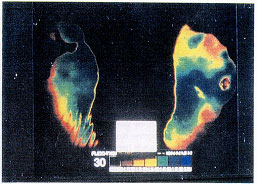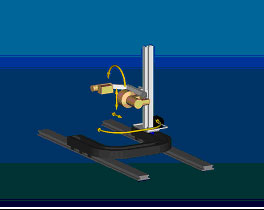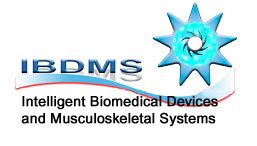About:
The IBDMS Center was established in 1998 as a National Science Foundation (NSF) Industry/University
Cooperative Research Center (I/UCRC) that focuses on research and education
in bioengineering. The center integrates programs and expertise from
the Colorado School of Mines, University of Colorado at Denver and the Colorado VA Research Center across a range of disciplines including
engineering, materials and medicine.
IBDMS has become an international center for the development of mathematical
modeling of the musculoskeletal system, in vivo implant and normal joint
imaging and measurement, bionic orthopaedics, sports medicine, human
sensory augmentation, human amplifiers (exoskeletons), and smart orthoses.
Additionally, through the efforts of this center, major and minor
programs in bioengineering and biotechnology are being established at
both the CSM graduate and undergraduate levels.
Mission:
The Center's mission is to enhance the quality of life for people suffering
from joint dysfunction by introducing intelligent bioengineering solutions
resulting from research in modeling, analysis, design optimization,
integrating biomaterials, feedback control, and assistive sensory devices.
Through innovative research and interdisciplinary education, IBDMS will
educate a new generation of bioengineers.
Research:
IBDMS research expertise includes the following:
- Advanced implant design
- In vivo fluoroscopic imaging of joint motions
- Kinematic and kinetic analysis of joints with and without implants
- Advanced biocompatible materials
- Micro-electromechanical (MEM) sensors and actuators
- Artificial sensory system for diabetic patients
- Spinal injuries and implants
- Modeling and simulation of musculoskeletal system
- Implant simulator - knee, hip, and TMJ simulators
- Automatic control and Artificial Intelligence
Examples of current research projects are described below:
Development of a Self-Powered Telemetric Knee
The telemetric knee is being developed with the intent of measuring
patellofemoral and tibiofemoral forces in vivo. The device is implanted
in place of the patella during a TKA, and measures the magnitude and
location of the patellofemoral force. Data is transmitted from the knee
to an electronic receiver located a few feet from the subject. The data
is then applied to a kinematic model of the knee and the tibiofemoral
forces are resolved. Current progress includes a completed force transducer
and implant design. Working prototypes of the transmitter and on-board
power generator have been completed and are being scaled down to fit
the implant. Development of a transmitter/receiver/data processing system
is in progress. This technology introduces a new approach to self-powering
prostheses and will provide application of micro-sensor technology for
in-vivo measurements of joint forces and motion.

Knee Simulator
The Development of an Insole for Diabetic Patients with the Loss
of Protective Sensation
The goal of this research is to develop an ambulatory device that will
enable diabetic patients to continue their activities of daily living
and inform the user of any risk of ulceration. This goal is not unique
to the research, but the approach is novel. Many studies have found
a correlation between plantar pressure and areas of ulceration. The
most common sites of ulcers on the diabetic patient's foot are located
where highest plantar pressure is manifested. Another indicator of ulceration
is temperature. Temperature has been shown in research to be a successful
indicator of the formation of plantar ulcers. Plantar temperatures remain
a much less explored variable of interest for use as a diagnostic tool.


Thermal Image and Shoe Inserts
The Development and Implementation of a Motion Tracking
Fluoroscopy System
Fluoroscopic imaging can be described as video x-raying.
Instead of producing an image to film, a sequence of images is captured
to video. This project will focus on the development of a motion tracking
fluoroscopy system to engineer an improved research tool for the joint
motion observation and analysis. It will incorporate closed loop controls,
which monitor patient motion, and instruct the fluoroscopy unit to move
accordingly. The objectives of the project are to to expand the capabilities
of a conventional fluoroscopy unit by increasing its range of motion,
allow capturing views in both frontal and sagittal planes with possible
vertical movement, and improvement of the accuracy in joint motion representation.

Proposed Motion Tracking Fluoroscopy Design
Development of the Wrist Reaction Forces during a Golf
Swing
3D Mathematical Model of the Ankle Joint Using Kane's
Method
Contact
Us:
Professor Joel M. Bach
Associate Professor,
Engineering Division
Associate Director,
Bioengineering and Life Sciences
Director, IBDMS Center
Colorado School of Mines
1610 Illinios Street, Brown Hall Rm314A
Golden, CO 80401
303-384-2161
jmbach@mines.edu


